- News
- Reviews
- Bikes
- Accessories
- Accessories - misc
- Computer mounts
- Bags
- Bar ends
- Bike bags & cases
- Bottle cages
- Bottles
- Cameras
- Car racks
- Child seats
- Computers
- Glasses
- GPS units
- Helmets
- Lights - front
- Lights - rear
- Lights - sets
- Locks
- Mirrors
- Mudguards
- Racks
- Pumps & CO2 inflators
- Puncture kits
- Reflectives
- Smart watches
- Stands and racks
- Trailers
- Clothing
- Components
- Bar tape & grips
- Bottom brackets
- Brake & gear cables
- Brake & STI levers
- Brake pads & spares
- Brakes
- Cassettes & freewheels
- Chains
- Chainsets & chainrings
- Derailleurs - front
- Derailleurs - rear
- Forks
- Gear levers & shifters
- Groupsets
- Handlebars & extensions
- Headsets
- Hubs
- Inner tubes
- Pedals
- Quick releases & skewers
- Saddles
- Seatposts
- Stems
- Wheels
- Tyres
- Health, fitness and nutrition
- Tools and workshop
- Miscellaneous
- Cross country mountain bikes
- Tubeless valves
- Buyers Guides
- Features
- Forum
- Recommends
- Podcast
review
£54.99
VERDICT:
Bombproof all-conditions gravel tyres – reliable, predictable and pretty grippy, but not fast
All-round tread pattern
Consistent grip
Easy fitting
Reluctant acceleration
Less supple feel than most
Weight:
503g
Contact:
At road.cc every product is thoroughly tested for as long as it takes to get a proper insight into how well it works. Our reviewers are experienced cyclists that we trust to be objective. While we strive to ensure that opinions expressed are backed up by facts, reviews are by their nature an informed opinion, not a definitive verdict. We don't intentionally try to break anything (except locks) but we do try to look for weak points in any design. The overall score is not just an average of the other scores: it reflects both a product's function and value – with value determined by how a product compares with items of similar spec, quality, and price.
What the road.cc scores meanGood scores are more common than bad, because fortunately good products are more common than bad.
- Exceptional
- Excellent
- Very Good
- Good
- Quite good
- Average
- Not so good
- Poor
- Bad
- Appalling
Pirelli's Cinturato Gravel M Classic tyre is tough, almost immune to cuts, and deals well with nearly all conditions. But its robust construction costs it outright speed and feel.
Italian tyre giant Pirelli has expanded its bicycle tyre range to include gravel. The company has kept it simple with the Gravel H for hard conditions, and Gravel M for mixed conditions, available in 700x35, 40 and 45mm, or 650Bx45 or 50mm sizes. A choice of black or classic tan sidewall completes the options.
> Find your nearest dealer here
I've been testing the Cinturato Gravel M Classic, which I like the look of – the vast majority of gravel tyres I've ridden have been all black. My test pair weighed in at 491g and 515g, for a combined total of 1,006g. Although 24g difference between tyres seems excessive, and is more than I'm used to measuring, it's less than 5% and the average does correlate with Pirelli's claimed 700x40 tyre weight of 500g. For reference, Continental's Terra Trail 700x40mm tyre weighs 478g, with much lower profile tread.
The 127tpi carcass boasts a belt and braces approach to durability and reliability, with the carcass material looping around each aramid bead, and overlapping to the opposite edge of the tread area. The result is two-layer sidewalls with three beneath the tread, and a further nylon puncture-resistant layer covers this from bead to bead. Finally, an additional reinforcing strip extends from each bead to just above rim height, then the rubber is added.
The folding bead feels quite flexible but needed some firm thumb action to coax onto the rim. I fitted the Pirellis to some Spank Industries Flare Vibrocore wheels, with 24mm internal width, and once sitting snugly on the rim, they inflated first time with a standard track pump, and were seated before I'd reached 50psi. There were initially small air leaks, but the tyres remained seated when deflated to add sealant, and sealed fully after a little handheld spinning.
Inflated to 35psi to begin with, and measuring 42mm wide on my wheelset, the Cinturato Gravel tyres rolled well on the road, thanks to their fairly continuous central tread, and weren't much noisier than a road tyre. However, after repeated accelerations from slow speed, and a few hills, I realised that the effort required to crank the Pirellis up to cruising speed was noticeably greater than I've experienced on other gravel tyres, even wider ones. Sustaining momentum on drags was equally taxing, and there was a definite reluctance to respond with any more than a lazy acknowledgment of my commands.
On hardpacked dry dirt and gravel, the Pirellis feel more efficient, allowing confident line control, and dispatching surface changes with ease. When things get wet, the tractor tread pattern of large, average height tread blocks willingly finds grip, even in fairly gloopy mud. When I started racing mountain bikes and cyclo-cross in the late 80s and through the 90s, tractor tread tyres were common. They work for tractors, of course, but tractor tyres operate in the vertical plane, whereas bikes need to lean into corners, and traverse off-cambers on two wheels, demanding a little more of their tyres.
In certain situations, I felt that the Pirelli's almost continuous central tread band wasn't gripping very much, and the adjacent, more widely spaced tread blocks weren't offering much more security, thus limiting control when changing line on slippery terrain. I also had occasional understeer, and wheelspin when I wasn't expecting it, and attributed both to the lack of bite in the tyre's central section on very slimy ground.
On or off road, the Pirelli's tough carcass undoubtedly makes for a firm-feeling tyre, without the suppleness of Continental's Terra, for example. Even at pressures around 20psi, it took time to adapt to the particular feel of the Cinturato Gravels, and feel confident in their grip. That said, on a loose, rutted, muddy descent, they handled every sketchy section with ease, and the SpeedGrip rubber compound, evolved from the company's mountain bike tyres, clung on to wet tree roots, with very few slips.
The open tread pattern clears mud extremely well, and with an inflated profile that is on the flat side of round on this wheelset, a short trip across wet grass soon scrubbed all of the mud from the tread. Overall, their wet conditions performance was better than average, and predictable enough that I wouldn't have any concerns about taking them almost anywhere. In the dry, they handle everything capably, but never with any real spark.
> Buyer’s Guide: 25 of the best gravel bike tyres
At £54.99 each, the Pirellis are a hefty investment, but they're cheaper than the more lightly treaded Continental Terra Trail, equivalent in price to the narrower WTB Riddler 700 TCS SG2 and the excellent Maxxis Rambler, tested here in its most voluminous 50mm width. Significantly cheaper, and with similar all-conditions capability, Specialized's 42mm Rhombus Pro 2Bliss Ready tyres have a lot to offer, but also weigh more than the Pirellis.
Pirelli's Cinturato Gravel M is built as tough as they come, and no matter what abuse my test period subjected the tyres to, they emerged totally unscathed, with no cuts or abrasions, and little sign of wear at all. If you live in an area with particularly rough or abrasive surfaces, or want a bikepacking tyre that's almost guaranteed to see you through, give the Pirelllis a try – just don't expect to win any sprints.
Verdict
Bombproof all-conditions gravel tyres – reliable, predictable and pretty grippy, but not fast
road.cc test report
Make and model: Pirelli Cinturato Gravel M Classic tyre
Size tested: 700x40
Tell us what the product is for and who it's aimed at. What do the manufacturers say about it? How does that compare to your own feelings about it?
Pirelli says: "The Cinturato™ Gravel Mixed Terrain is a gravel-specific tyre designed for mixed terrain, where the surface varies between compact and unstable terrain and all intermediate types."
Tell us some more about the technical aspects of the product?
Reinforced 127tpi woven casing, Nylon puncture resistant layer, Aramid bead, SpeedGRIP rubber compound.
Rate the product for quality of construction:
9/10
The Cinturato Gravel looks and feels high quality.
Rate the product for performance:
7/10
They're extremely robust and durable, with impressive cut and abrasion resistance. Road performance is smooth, and they grip well in almost all conditions, but have relatively firm sidewalls, and aren't quick to accelerate.
Rate the product for durability:
8/10
If you ride in flinty or rocky terrain regularly, you'll appreciate the Cinturato Gravel's ability to shrug off aggressive terrain.
Rate the product for weight (if applicable)
7/10
Averaging out at around 500g per 40mm tyre, the Pirellis aren't light, but protection always adds mass.
Rate the product for comfort (if applicable)
7/10
There's no bumping on tarmac, thanks to the central tread blocks, and the Pirellis absorb much off-road vibration, but less then more supple tyres.
Rate the product for value:
5/10
The per tyre price is on a par with other top drawer gravel tyres.
Tell us how the product performed overall when used for its designed purpose
The Cinturato Gravel tyres coped well with the sort of varied surfaces that Pirelli says they're intended for.
Tell us what you particularly liked about the product
The ease of fitting and setting up tubeless.
Tell us what you particularly disliked about the product
Their reluctance to accelerate briskly.
How does the price compare to that of similar products in the market, including ones recently tested on road.cc?
Asking £54.99 per tyre isn't unusual these day – the excellent all-round Maxxis Rambler costs the same, as does the equally capable WTB Riddler. Panaracer's GravelKing Semi Slick Plus TLC is £5 cheaper, and Continental's Terra Trail £5 more.
Did you enjoy using the product? Yes
Would you consider buying the product? Yes
Would you recommend the product to a friend? Yes
Use this box to explain your overall score
I like the Cinturato Gravel's ease of fitment, reliability and buzz-free road manners, and was generally impressed with its ability to grip in most conditions. But it's hard to ignore the increased effort that every acceleration needs, and there are definitely faster-rolling tyres.
About the tester
Age: 49
I usually ride: Specialized S-Works Tarmac SL6 with Campagnolo Super Record 12s My best bike is: BMC SLR01
I've been riding for: Over 20 years I ride: Most days I would class myself as: Expert
I regularly do the following types of riding: road racing, time trialling, cyclo cross, commuting, touring, club rides, general fitness riding, mtb, Riding with my children, using both a child seat and trailer bike
Latest Comments
- Paul J 14 min 13 sec ago
A lot of Alpine passes weren't tarmaced till into the 70s, so the Tour de France was at least partly a gravel race till then. There was a lot of...
- Miller 16 min 32 sec ago
If I was a DS I'd be lambasting Bettiol for being defeatist but as a spectator, his view seems pretty realistic. Anyway I want Pogi to stay out of...
- lesterama 39 min 11 sec ago
Something something BC slow-motion crash. And, to be honest, it's painful to watch the way the sport is going downhill here.
- wtjs 52 min 29 sec ago
I hope this outcome brings some form of closure for Roseanne’s wider family and my thoughts very much remain with them today...
- mark1a 1 hour 12 min ago
I take a different view in that hookless rims serve no purpose other than to be made more cheaply for an equivalent weight allowing the...
- David9694 16 min 17 sec ago
Double yellow lines to be reintroduced around Faversham Guildhall and Market Place to ‘protect’ views of town’s historic landmarks and character...
- Gkam84 16 hours 28 sec ago
I think that is why blind eyes have been turned in the UK, internationally aswell, with things like the Redhook crits, there were many licensed...
- mdavidford 17 hours 9 min ago
Ahem - other esporters(?) might be rather surprised to hear that the UCI has taken over their events - I think that would be the Cycling Esports...
- Bungle_52 17 hours 18 min ago
I wonder how he got to the game?
- OldRidgeback 17 hours 21 min ago
You'd need some good wet weather gear for that ride too.





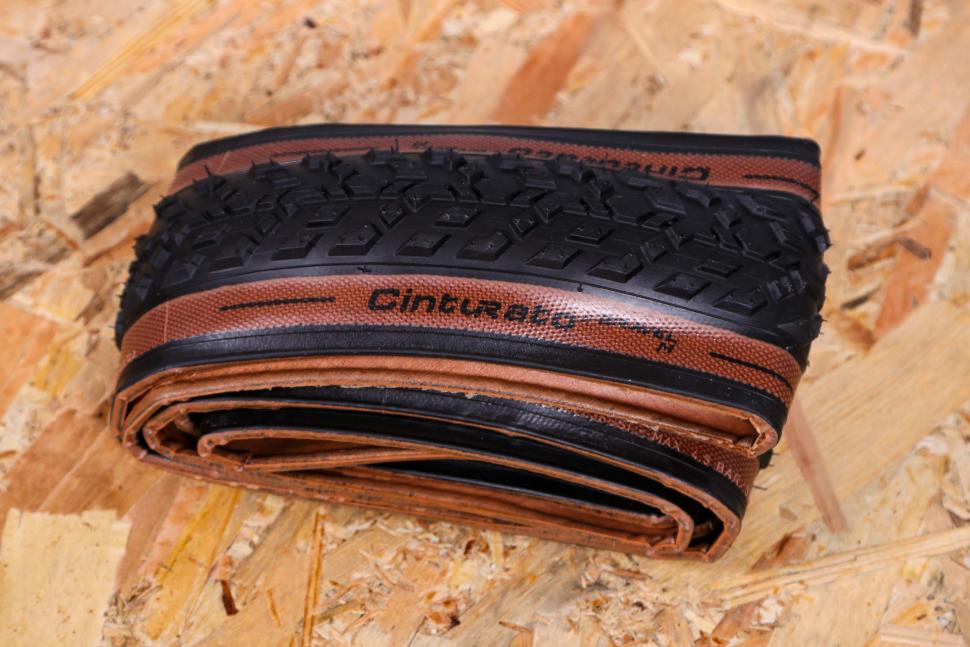


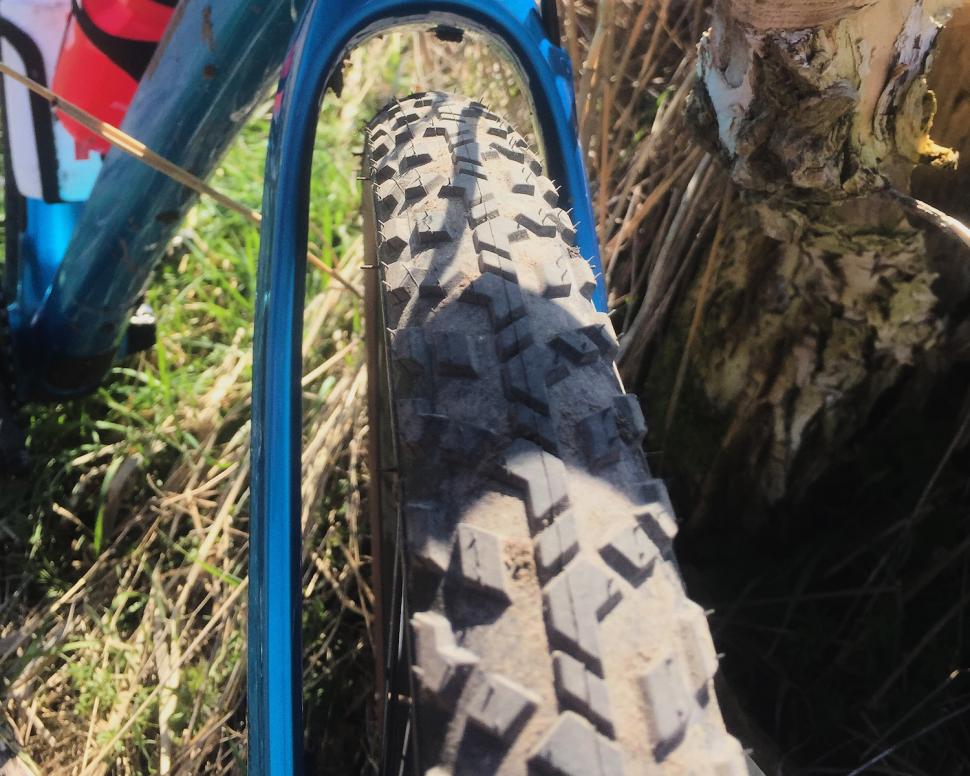
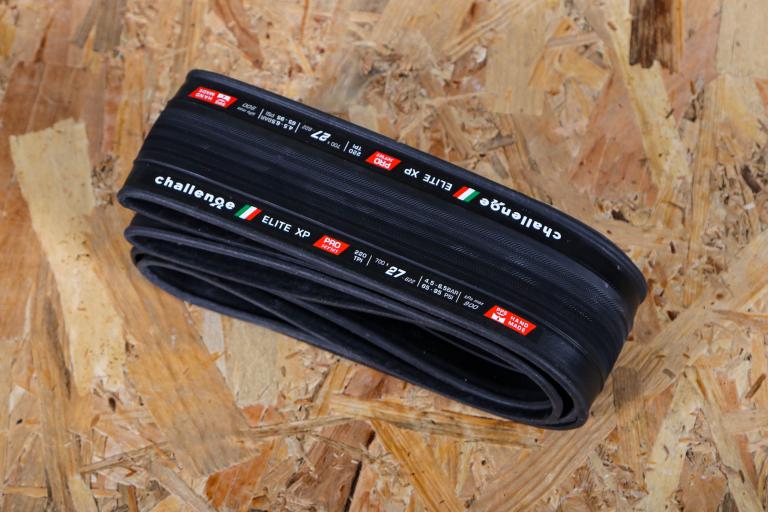
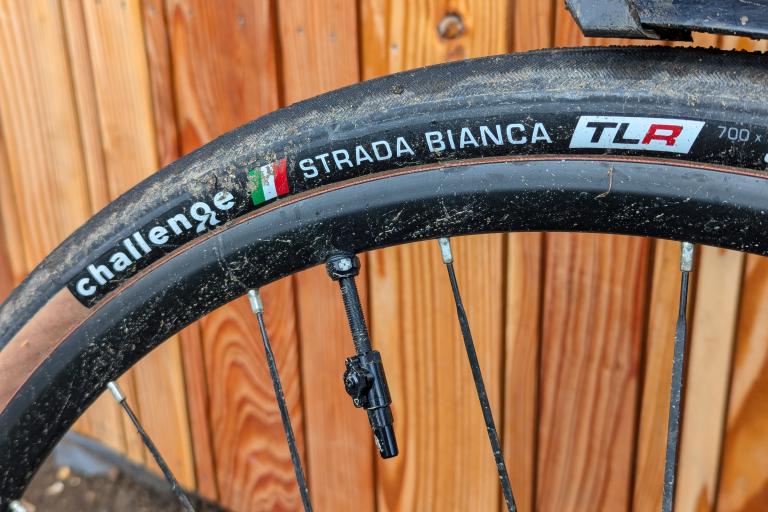
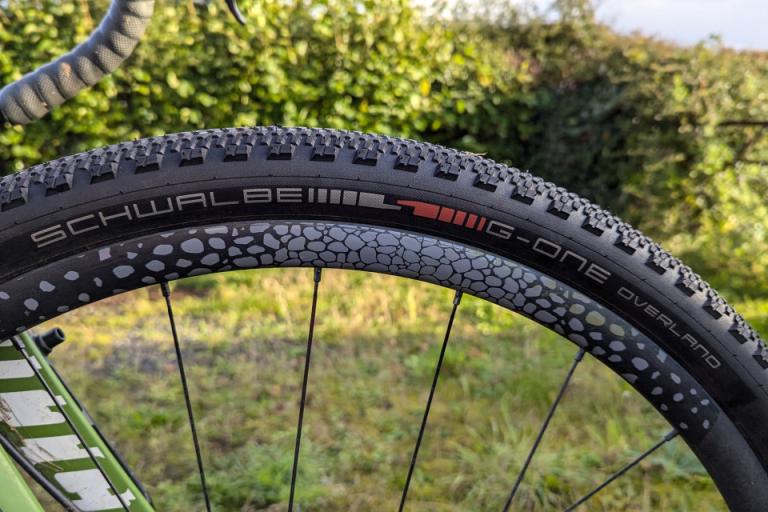

Add new comment
2 comments
I've got a Pirelli tire thing, I have Cinturato Velo's fitted to the road bikes and the Gravel M 40mm fitted to the gravel bike, which also has a pair of the Cinturato Velo's mounted to its road wheels. I like the idea of the air remaining inside the tire and for thousands of kilometres, this has been the case with the tradeoff being not at the cutting edge of speed, however not something that troubles me. I am fine with the balance of performance, grip and reliability.
The gravel tires are mounted tubeless on a pair of hand built DT Swiss based wheels and I run them at 30psi, seems low but where I ride works fine. I get a fairly plush ride by gravel trail standards, cattle grids are crossed without jarring, mud, really loose gravel in washouts, all traversed without a murmur. Compared to the Riddlers that came with the bike, these offer a whole different ride and level of control as well as peace of mind when the going gets rough.
Using the 50mm x 650b versions. Best mixed surface gravel tyre I've tried so far...and cushy enough for me at 25 psi